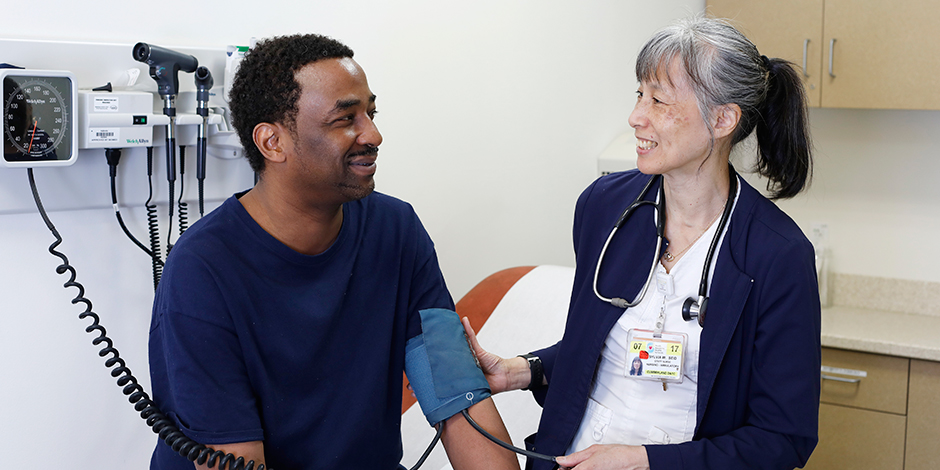NYC Health + Hospitals/Lincoln’s Approach to Hypertension Shows Success in Controlling Bronxites’ Blood Pressure
Jun 27, 2017

More than three-quarters of patients with hypertension receiving care at NYC Health + Hospitals/Lincoln currently have their blood pressure under control—an achievement reflecting the success of the “Treat-to-Target” program implemented throughout the city’s public health system. Improving blood pressure control means reducing risk for stroke, heart attack, kidney damage, vision loss, erectile dysfunction, and memory loss.
The Bronx hospital’s success rate of 78.1 percent is even better than the health system’s overall 72.8 percentage of patients (ages 18 to 75) being treated for hypertension who got their blood pressure under control (i.e., 140/90 or lower), as of April 2017. Nationally, 54 percent of people with high blood pressure have their condition under control, according to the Centers for Disease Control and Prevention.
“Our borough is often singled out for data showing Bronxites are less healthy, but we are showing that, with the right support from caring and committed health care providers, we can make a real difference,” said Milton Nuñez, chief executive officer at NYC Health + Hospitals/Lincoln. “With high-quality clinical care and better lifestyle choices, Bronxites have the power to live their healthiest lives.”
Through the Treat-to-Target program, nurses work closely and consistently with patients. For hypertensive patients with elevated blood pressure, nurses follow up with patients every two to four weeks, in the clinic or by phone, until the blood pressure is controlled. Nurses assess whether the problem is due to challenges with medication adherence, a need for a change in the medication regimen (e.g., increased dose), or some other factor. The nurses then work with patient and provider as needed to adjust the care plan and assist the patient in controlling blood pressure.
NYC Health + Hospitals also sends monthly performance data to each facility, broken down by provider and by clinic. Data are used to plan and monitor performance improvement. The regular feedback leads to greater uniformity of care and optimal practice throughout the system.
Facilities within the public health system that recorded the most improvement in 2016, including NYC Health + Hospitals/Lincoln, identified a number of factors behind their recent successes. Among them, they noted an increased number of nurses participating in “Treat-to-Target,” as well as the addition of more evening and Saturday appointment slots for patients; better referral patterns to the program from providers, including “warm handoffs” to program nurses; and spreading best practices from adult medicine clinics to other specialized primary care clinics (e.g., those focused on geriatrics or HIV).
Plans to strengthen the program in 2017 include improving processes for patient self-monitoring of blood pressure at home and partnering with community-based organizations and the New York City Department of Health and Mental Hygiene (through the Citywide Hypertension Initiative) to find more effective ways to connect with hard-to-reach patients.